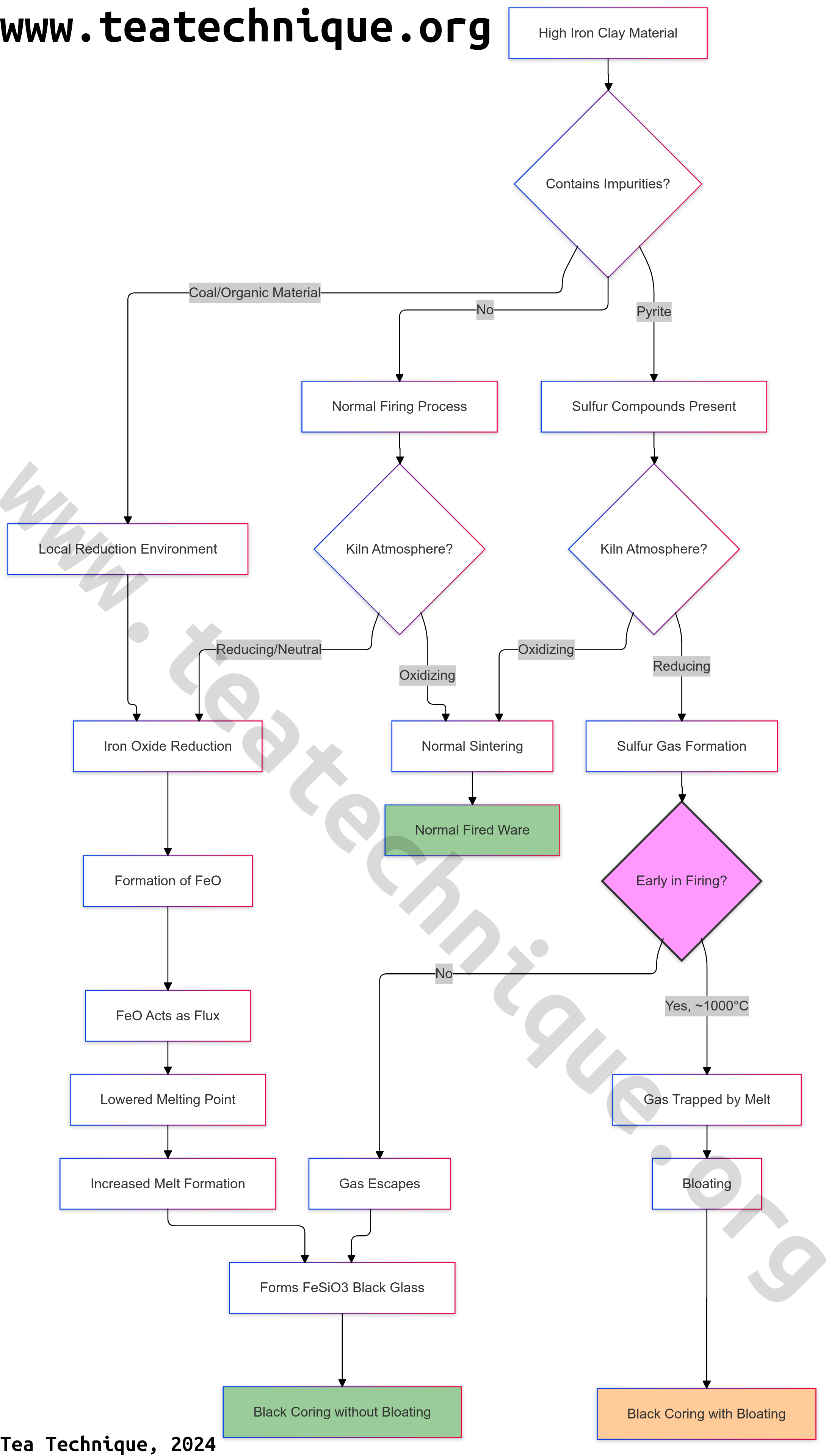Magnetism and Black Coring (黑骨)
Permanent magnetism of fired ceramics has been known since ancient times; museums are filled with examples of ancient Egyptian bricks and Greek amphora that maintain their magnetic properties indefinitely[1]. Magnetism in fired ceramics may be caused by either the inclusion of magnetic iron, by the creation of rare iron polymorphs[2], or through the reduction of various iron oxides into a high iron (II) oxide (FeO) amorphous crystalline vitrified glass – the source of the black coring flaw. Black coring was a common and accepted outcome in the production of bricks and other building materials in pre-modern times; while the flaw renders the material more brittle, it has relatively little effect on a brick’s ability to withstand the compression forces for which it is used.
In Yixing, black coring was a relatively rare occurrence effecting predominantly zhuni material wares during the Qing Dynasty and Republic of China periods. Zisha teapots with the black coring (黑骨, hei gu, “black bones”) flaw are often indistinguishable from un-flawed wares until broken, as they frequently exhibit no indication of their unique property on their surface. The flaw affects only the inside of the ware, below the inner and outer skin; the change is internal to the exposed clay and only identifiable with a magnet[3] unless the outer skin is broken – unfortunately, wares with black coring are prone to breaking as the flaw renders them excessively fragile and such wares often bear “black bones”[4] visible in chips and breakage. Many high-level tea practitioners do not consider black coring alone to be a flaw, as the fragile material is well suited to tea.
The black coring flaw is often paired with bloating, though most of the wares exhibiting black coring and bloating break during firing, and are thus destroyed at the kiln-site without entering the Yixing teapot market. Bloating is always considered a flaw, independent of black coring.

This page is for paying subscribers only
Subscribe NowAlready have an account? Log in